Stucco is a very versatile siding choice that is highly sought after. Because it is fairly easy to install and maintain, moderate in price, and lasts a long time, stucco can be a great choice. However, there is a huge variation in stucco texture, and different finishes will produce very different results.
Stucco is found in many different architectural styles, from Mexican adobe homes to English countryside manor houses. Because of this, it is essential to choose the right finish for your home. Educating yourself on the many different textures of stucco that are offered can be very helpful. In doing this, you will be prepared to pick the perfect stucco finish to customize your dream home.
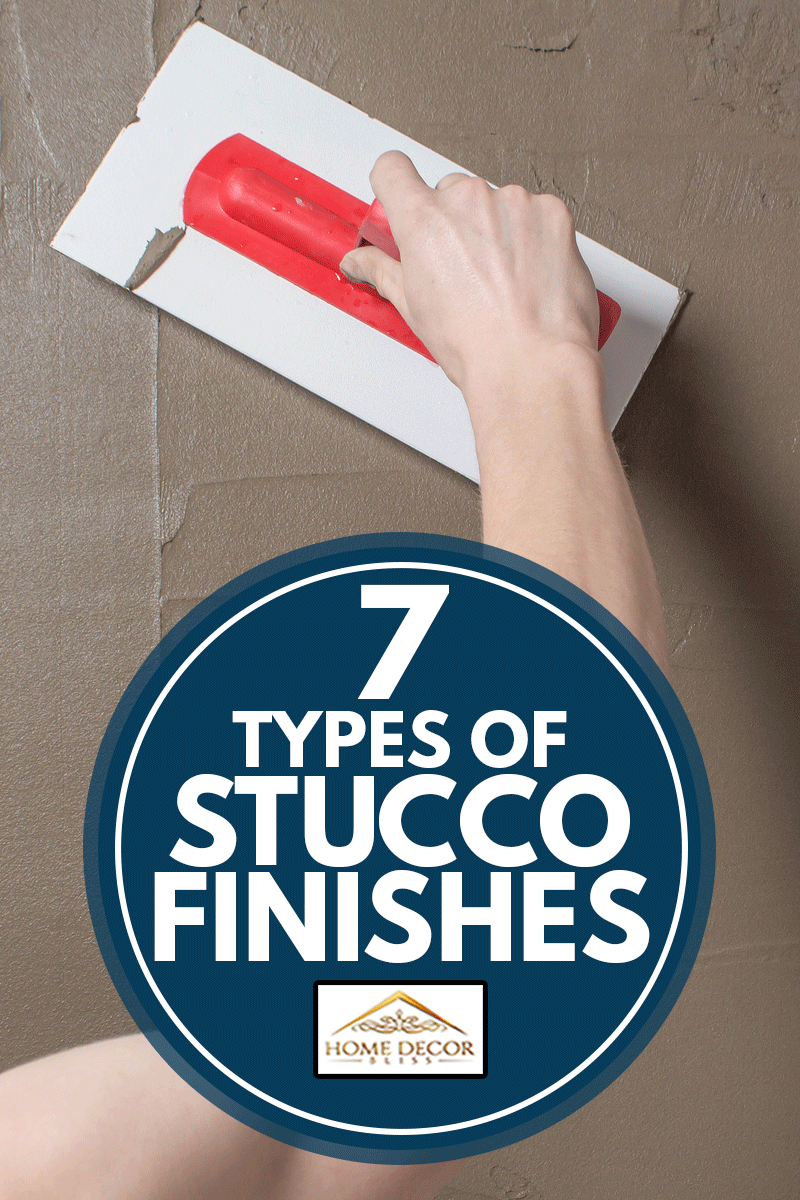
1. Cat Face Finish
Another name for this finish is California finish or Montalvo. As the name implies, cat face stucco can tend to look like cat faces, although you may need to use some imagination. This finish features a generally smooth surface with various inclusions or rough patches scattered across the wall. These rough patches can be large or small and can be spaced close together or further apart depending on preference.
Technique
Cat Face stucco is achieved by using two coats. First, a rough base coat of stucco is applied and allowed to dry. This can be accomplished with either a trowel or a stucco sprayer. Next, a topcoat is applied and smoothed down using a metal trowel. Irregular patches of the base coat are allowed to show through, making the cat faces.
Click here to find this high-quality steel trowel on Amazon.
2. Dash
Dash or roughcast stucco is one of the more textured stucco finishes available. It is very rough and typically sprayed on, resulting in a bumpy, gritty appearance. There are several variations within the category of dash stucco. These include fine dash, heavy dash, knockdown and pebble dash, or roughcast.
Technique
To create a dash stucco finish, a base coat of stucco is applied to the wall and raked. Next, stucco is sprayed onto the wall using a hopper gun. Alternatively, the stucco can be "dashed" onto the wall using a trowel or a brush. A finer spray will result in a fine dash finish, and a heavier spray will give you a heavy dash finish.
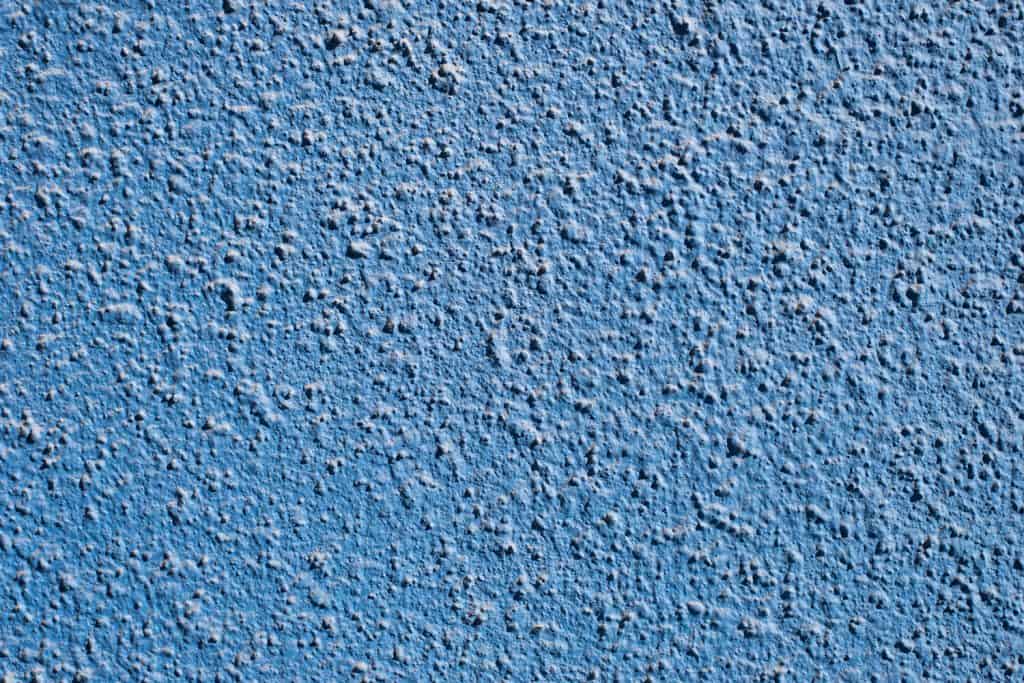
Knockdown Dash
Knockdown Dash is just an additional step. This look is achieved by knocking it down with a clean, wet, metal trowel. Using long, smooth strokes, the peaks of stucco are knocked down.
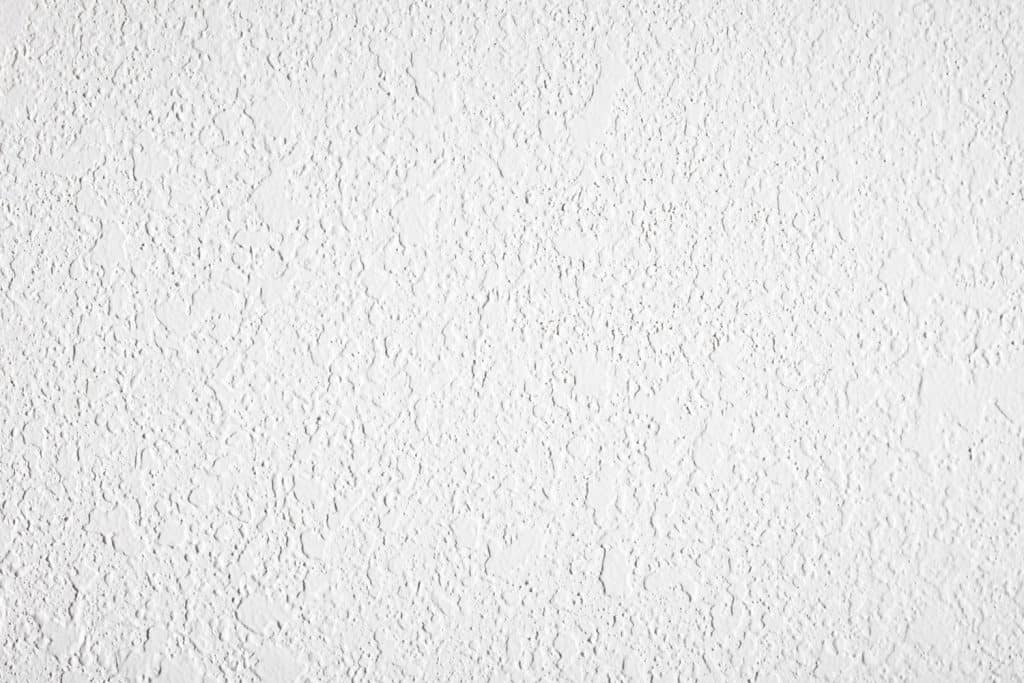
Pebble Dash
Occasionally, fine gravel or shell remnants are added to the stucco mix. When gravel is added, it is called pebble dash, or roughcast stucco. This mix is dashed against the wall after the base coat has dried. The pebbles that stick create a pleasant texture.
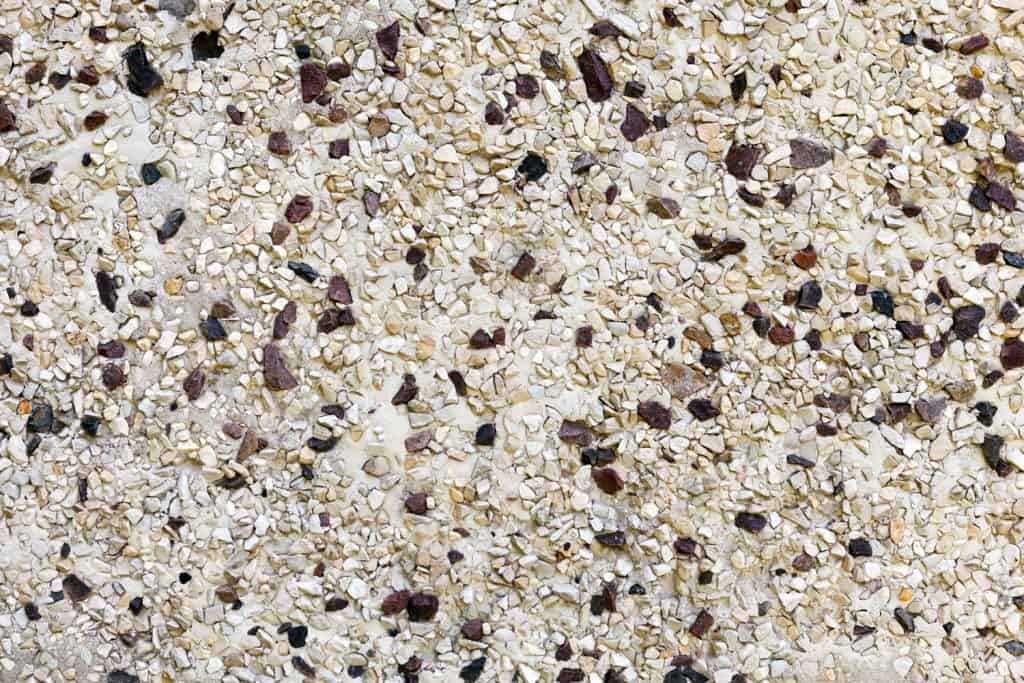
3.  Lace
Lace
Lace, lace and skip, or skip and trowel, take your pick. Just the delicate lace that it is named after, this unique finish has many different looks. It is the most common and widely used stucco finish. Its popularity may be due to the forgiving nature, as it is great for hiding flaws and imperfections.
Technique
Lace stucco consists of a fairly smooth base coat and then a texture coat. The texture is sprayed on and then knocked down or skipped across with a wet trowel. In skipping the trowel, various unique and delicate patterns are created. Depending on how heavily it is applied, you can create fine, medium, and coarse finishes.
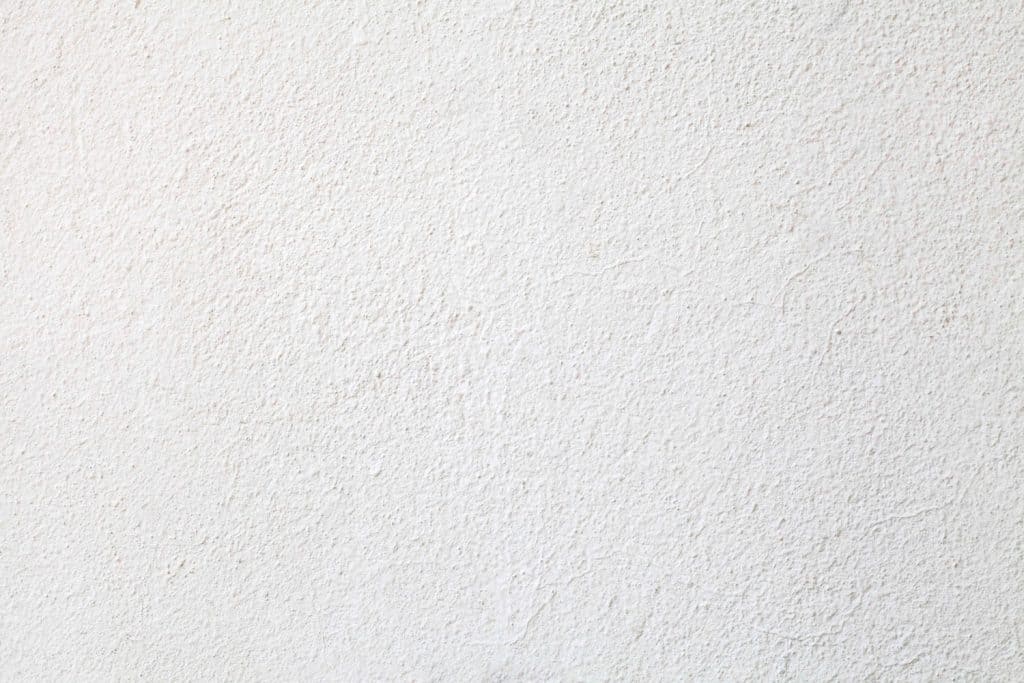
Click here to see this handheld stucco sprayer on Amazon.
4. Sand
Sand stucco is also known as a float finish because of the tool used to finish the texturing. Additionally, this stucco appears as though it contains beach sand, hence the name. Actually, sand is added to the stucco mix, giving it a fine, grainy texture.
Because it is versatile, easy to apply, and easy to patch, sand finishes are pretty popular. This is another texture useful in hiding surface flaws and can be fine, medium, or coarse, depending on preference.
Technique
Although you can spray on a sand finish and then trowel it down, it is typically troweled on by hand. Next, a foam float is used to evenly spread the stucco, giving it a delicate finish.
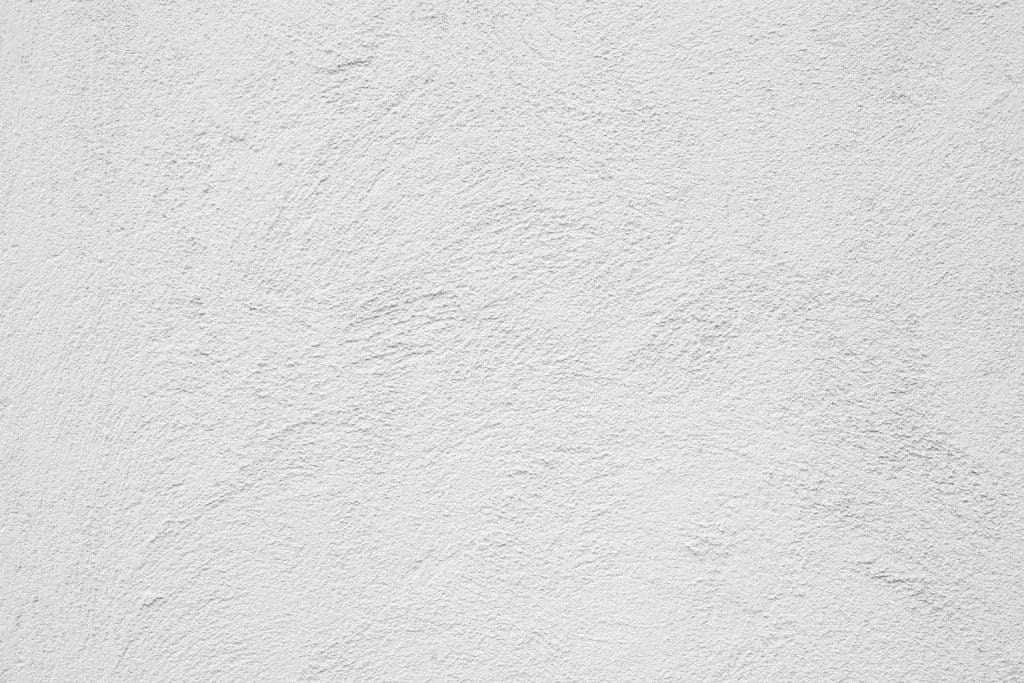
Click here for this foam stucco float on Amazon.
5. Smooth
Smooth stucco finishes are well suited to Mediterranean-style homes and are growing in popularity. Although they boast a simple elegance, smooth stuccos are anything but simple to apply. Creating a smooth finish is quite tricky and requires more skill and patience than other finishes. However, the result is well worth the effort and investment.
Technique
A fine cement stucco is used to create the base coat that acts as a smooth, solid foundation. The finishing coat is then applied and ultimately scraped smooth and clean using a pool trowel.
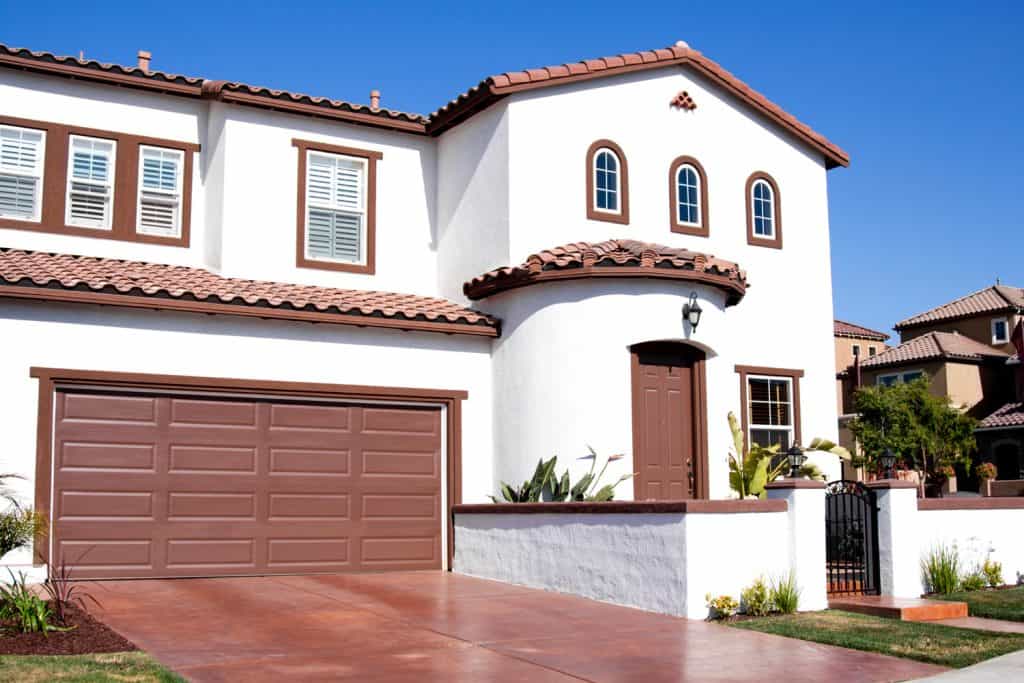
Click here to see this pool trowel on Amazon.
6. Santa Barbara
Also known as the Santa Barbara Mission finish, this stucco finish is very elegant. Because of the lovely, natural, mottled pattern, it is often left unpainted. Santa Barbara stucco is well suited to Spanish or adobe-type homes and structures. Although it could technically be included under the smooth finishes, Santa Barbara features an irregular, semi-smooth stucco finish.
Technique
7. The Santa Barbara finish requires two coats. First, a base coat is applied and allowed to dry for a short time. Next, a thicker topcoat is troweled on and then troweled smooth with a pool float before it sets.
Can I Create A Santa Barbara Finish In A Single Coat?
A Santa Barbara finish can technically be achieved using just one coat of stucco, scraped down. However, this technique is not recommended as it can result in increased cracking and other issues.
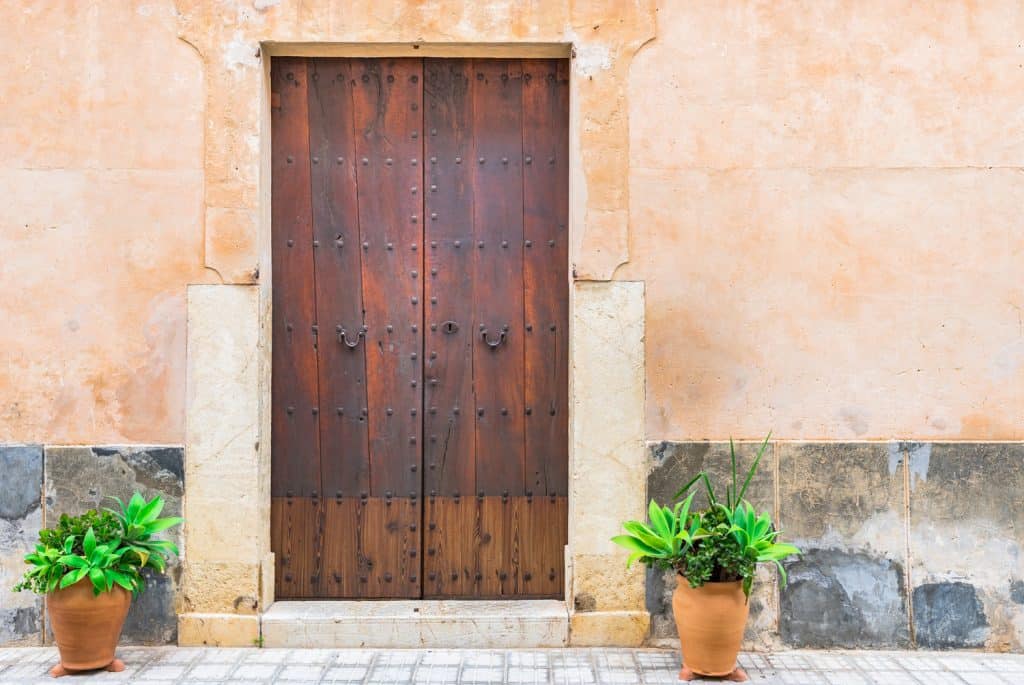
7. Worm Finish
The worm finish is not as common as some of the other options that we have seen. As the name implies, the grooves in this finish look like worms have been pressed against the stucco. Alternative names for this texture are Putz and Swirl. This stucco finish is also available as fine, medium, and heavy.
Technique
Usually, the stucco is applied by hand. Special particulates are mixed in with the stucco, adding texture. When it is troweled, these particulates are dragged through the stucco, creating indentations that look like worms. The rest of the stucco is troweled down fairly smoothly.

How Long Does Stucco Last?
Although there is no specific amount of time that stucco will last, it is one of the most durable siding options. That being said, stucco should last at least 50 to 60 years. However, many homes still have good stucco even though they were built in the early 1900s.
What Is Stucco Made Of?
Stucco consists of three parts.
- Aggregates - usually sand
- Binder - typically Portland cement
- Water
Other additions, such as pigment, pebbles, glass, shells, lime, or other things. However, these three ingredients make up most stucco.
Should I Paint My Stucco?
This is a commonly asked question and one that has had some debate. Ideally, because stucco is very porous and needs to breathe, stucco should not be painted. The stucco can be tinted during the finishing stage by adding pigment to the stucco. However, you may not love the original stucco color and may want to change it. A compromise is to look into a tinted portland cement coating for your stucco that will color your stucco while still allowing it to breathe.
In Closing
Who knew there were so many different types of stucco finish? We've covered all of the most common finishes that you will encounter. If you need a little inspiration to help you choose your finish, check you this article: 15 Stunning Stucco House Ideas.
You may also be interested in one of these links:





I like when you mentioned that stucco is a very adaptable and popular alternative for siding. Stucco is a good option since it is durable, reasonably priced, and simple to install and maintain.
I love stucco paint
So lovely, I’m a painter also I do stucco and other marble effects paints and I would loved to learn more pls